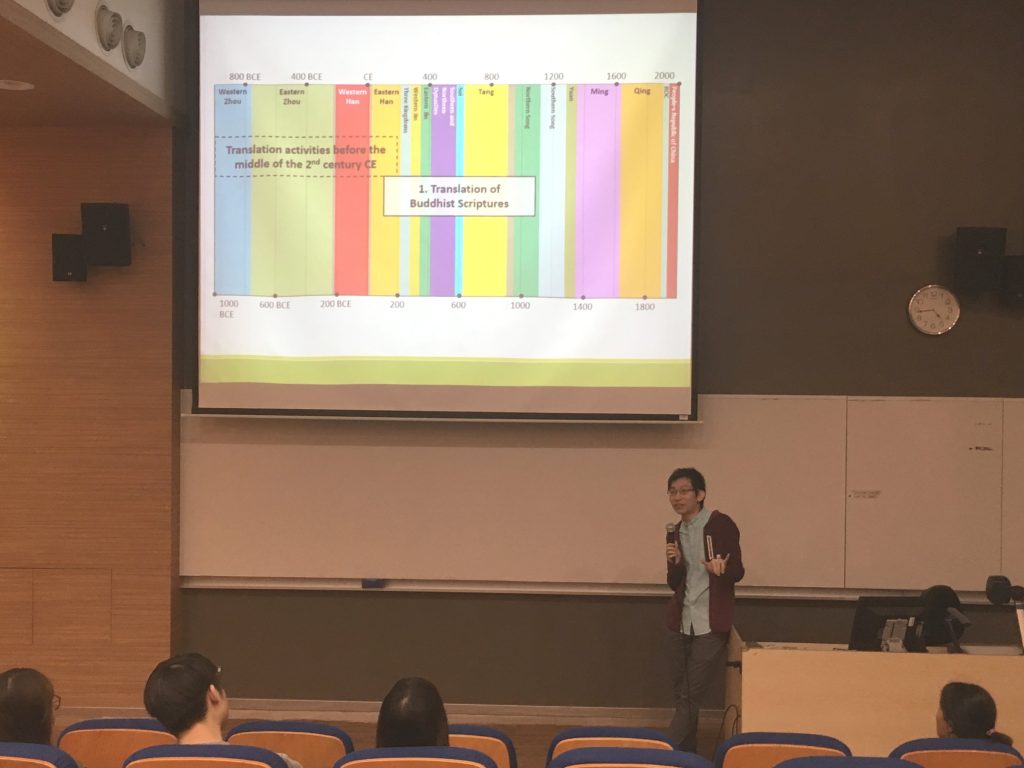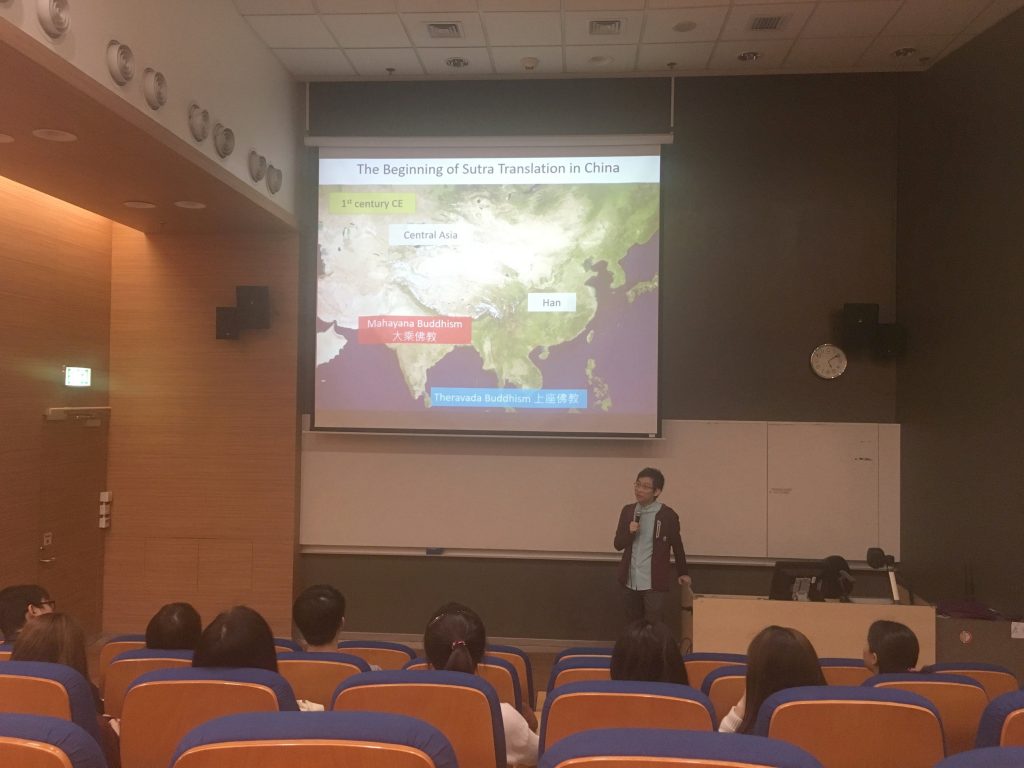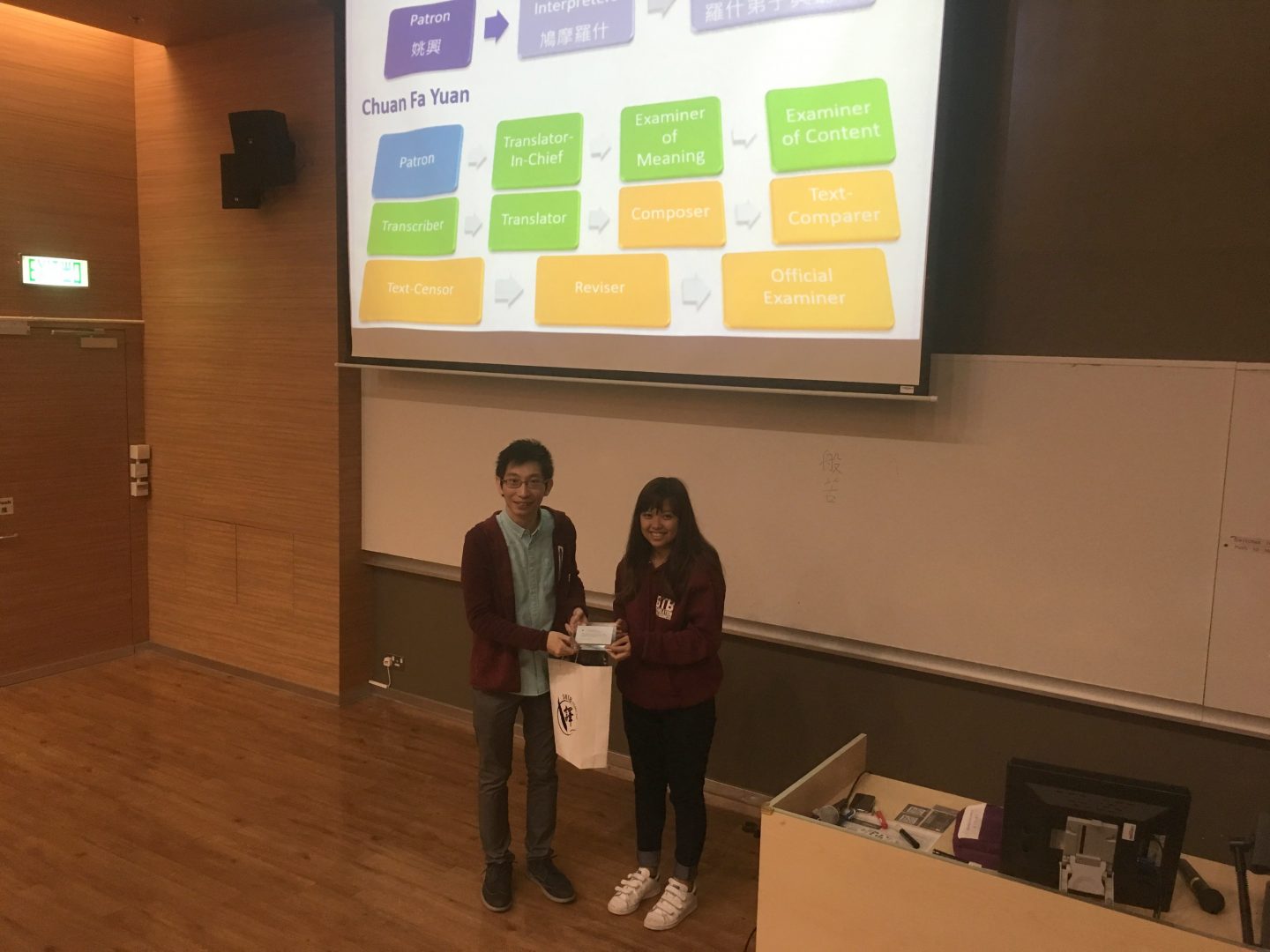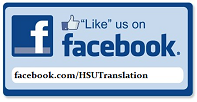Seminar: How Did Translators Work 1000 Years Ago?
27 November 2017
Seminar: How Did Translators Work 1000 Years Ago?
Students travelled back to as early as the Jin Dynasty to see how a translator’s duty was fulfilled in an era without Google Translate, in a seminar delivered by Dr. Siu Sai Cheong.
More than 1000 years ago, Buddhist Scriptures translation would be accomplished by a team of some 500 intellectuals sharing different tasks: source text analysis; oral translation, transcription, recitation and discussion of Sanskrit classics; and target text proofreading and polishing.
Dr. Siu Sai Cheong illustrates the ancient translation progress in China with a timeline and a map
It was a serious and stringent process as these tasks were assigned to individuals according to their strengths; Indian monks would be responsible for decoding while Chinese linguists would take care of encoding and editing. One principal translator such as Dao’an and Kumārajīva, who became significant figures in Chinese translation history, would coordinate and supervise the work.
Ancient Buddhist Translation, according to Dr. Siu, is still relevant to modern translators since it promoted the invention of various Chinese words like 煩惱(kleśā), 世界(lokadhātu) and 剎那(kṣaṇa).
The Students’ Association of Translation with Business (SATB) invited Dr. Siu Sai Cheong, Associate Professor of the School of Translation, to deliver the academic talk with an aim to introduce students to the dynamic world of translation and broaden their horizons.
Dr. Siu receives a souvenir from Jessica Chan, President of the SATB




